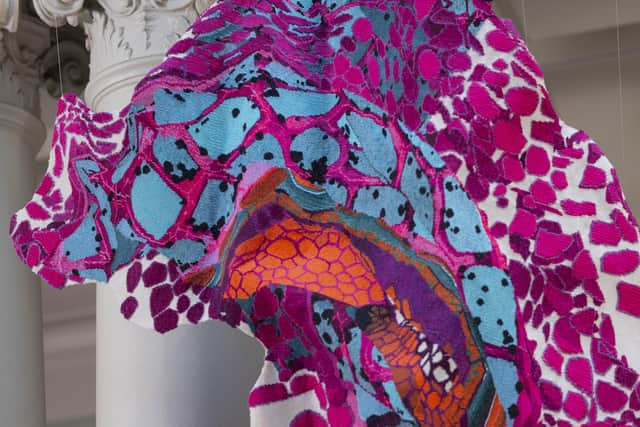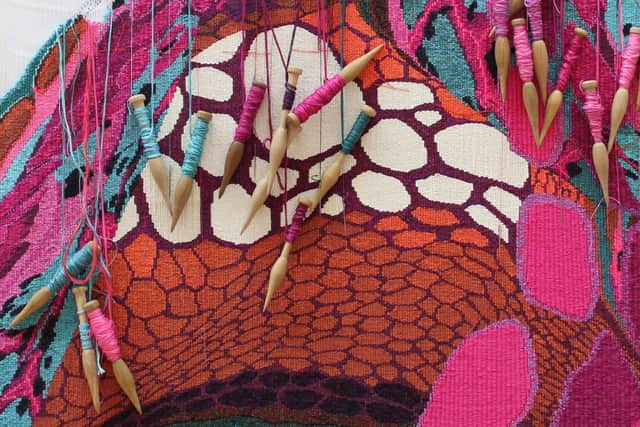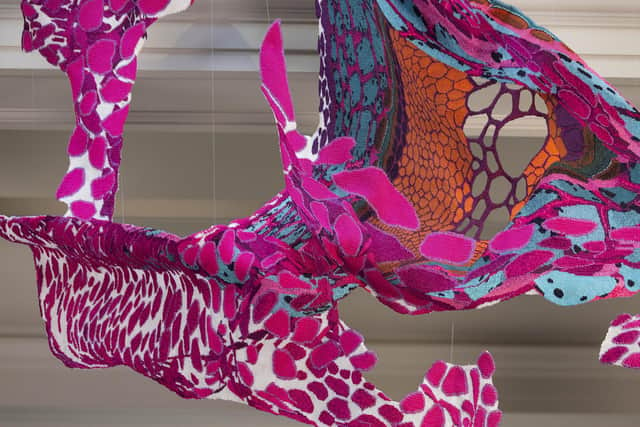Exclusive:Edinburgh Seven: Trailblazing campaign that paved way for women to go to university honoured with tapestry
They were the trailblazing young women who went into battle in Scotland’s capital 155 years ago for their right to study medicine.
Now the Edinburgh Seven, the first female students to matriculate anywhere in the UK, are to be honoured in the city's historic royal infirmary building as part of its multi-million pound transformation.
Advertisement
Hide AdAdvertisement
Hide AdArtist Christine Borland has joined forces with the city's Dovecot Studios gallery to create a three-part tapestry work, which will go on permanent display in the new Edinburgh Futures Institute, which has been created in the old ERI building on Lauriston Place, in memory of the Edinburgh Seven.


It took seven weavers more than 4,000 hours to create the “triptych” designed by Borland, with around 90,500m of yarn at the tapestry studio, which dates back to 1912.
Ayrshire-born Borland, who was commissioned by Dovecot Studios, studied at Glasgow School of Art and the University of Ulster, in Belfast.
Much of her work has been inspired by forensic science, the history of medicine, medical ethics and human genetics. She used motion-capture technology to record the movement of cloth in acts associated with medical training and research as part of her work on the tapestry project.
The young women being honoured in the work – Sophia Jex-Blake, Isabel Thorne, Edith Pechey, Matilda Chaplin, Helen Evans, Mary Anderson and Emily Bovell – were brought together by an article in The Scotsman in 1869 that encouraged women to apply to study medicine in Edinburgh.


The piece had been inspired by a successful application by Jex-Blake, who later wrote a number of articles anonymously for The Scotsman, to study medicine at the university, only for the decision to be overturned by an appeal to the university court on the grounds that staging a separate class for just one woman would be too difficult and expensive.
The Edinburgh Seven faced constant discrimination from the university’s medical establishment and their fellow students, who rioted outside one of their exams, and were effectively prevented from graduating. However, their efforts led to the introduction of legislation in 1876 which allowed women to both join the medical profession and go to university in the UK.
Advertisement
Hide AdAdvertisement
Hide AdThe Edinburgh Seven were virtually unrecognised in the city until a plaque was erected at the university in 2015. The city’s first female undergraduates were finally awarded posthumous degrees by the university four years later.
The work designed by Borland is on temporary display at the V&A in London before going on display this summer at the Edinburgh Futures Institute, the new home of the Edinburgh International Book Festival.


Dovecot Studios director Celia Joicey said: “The Edinburgh Seven commission showcases tapestry as a contemporary art medium capable of expressing complex ideas in aesthetic form. Dovecot has established an international profile by working with the most exciting artists since 1912, and our ambition with this artwork is to sustain traditional tapestry skills while embracing new technology.”
Borland said: “It’s been a privilege to work with the Dovecot team to experiment at the boundaries of contemporary tapestry. As an entirely hand-based process, tapestry weaving is a performative medium, which is almost alchemical in its transformation of yarn purely through the skill and power of the body of the weaver.
“The ability of tapestry to interpret history with great integrity and imagination makes it a pertinent medium for the extraordinary story of the Edinburgh Seven.”
Comments
Want to join the conversation? Please or to comment on this article.
